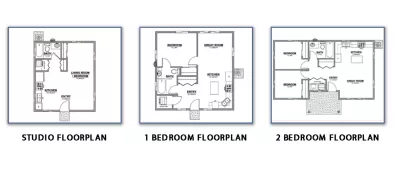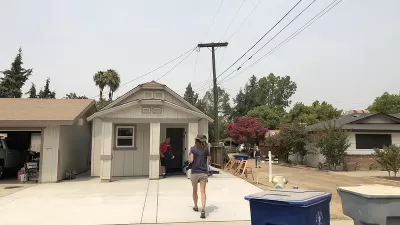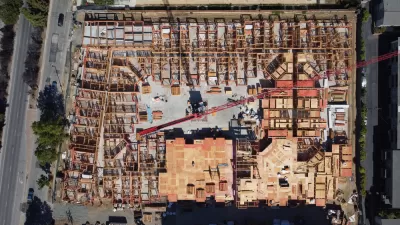Why doesn’t Denver build more ADUs? It’s complicated.

Joe Rubino poses the question of why Denver is building and permitting more accessory dwelling units (ADUs) despite their multiple benefits.
“They can serve as a source of income for homeowners struggling to keep up with Denver’s rising cost of living and property taxes. Or they can house aging relatives, providing parents and grandparents with the opportunity to live just a few steps from loved ones but also maintain some privacy,” writes Rubino. “They have environmental benefits, providing options for the reuse of garages or underutilized space within a home. They create infill housing close to transportation corridors and employment centers instead of driving more sprawl on the periphery of town.”
Despite those reasons and the rising cost of rents in Denver, the city permitted only 393 ADUs between 2010 and 2021—2010 being the year the city passed its “big zoning overhaul.”
“That’s roughly 33 permits per year over that span. The high-water mark was 2019 when 71 permits were pulled. In 2021, the city issued 64,” writes Rubino.
Renee Martinez-Stone, a former Denver Planning Board member and Denver Housing Authority staffer, is quoted in the article saying that everyone understands the need for more ADUs, but that doesn’t seem to be enough to build them. Martinez-Stone is leading a program at the Denver Housing Authority to make it easier to permit and build ADUs in west Denver neighborhoods, according to Rubini. The city’s department of Community Planning and Development also has an ADU program, but the regulatory market for ADUs remains complex, according to Martinzez-Stone.
“So far, city planners and the advisory committee have focused on identifying barriers to development, Barge said. Those barriers include that some residential lots, those under 3,000 square feet, aren’t eligible for ADUs because they are deemed too small. The city’s zoning code also caps an ADU’s height at either 24 feet or 1.5 stories. The 1.5-story measure is a technical way of divvying up a two-story building that can drive up construction costs and prevent a homeowner from following through on building,” writes Rubino.
More details on ADUs and the Denver development market are included in the source article.
FULL STORY: Everyone agrees accessory dwelling units can help Denver’s housing crunch. So why are so few being built?

Alabama: Trump Terminates Settlements for Black Communities Harmed By Raw Sewage
Trump deemed the landmark civil rights agreement “illegal DEI and environmental justice policy.”

Study: Maui’s Plan to Convert Vacation Rentals to Long-Term Housing Could Cause Nearly $1 Billion Economic Loss
The plan would reduce visitor accommodation by 25% resulting in 1,900 jobs lost.

Planetizen Federal Action Tracker
A weekly monitor of how Trump’s orders and actions are impacting planners and planning in America.

Waymo Gets Permission to Map SF’s Market Street
If allowed to operate on the traffic-restricted street, Waymo’s autonomous taxis would have a leg up over ride-hailing competitors — and counter the city’s efforts to grow bike and pedestrian on the thoroughfare.

Parklet Symposium Highlights the Success of Shared Spaces
Parklets got a boost during the Covid-19 pandemic, when the concept was translated to outdoor dining programs that offered restaurants a lifeline during the shutdown.

Federal Homelessness Agency Places Entire Staff on Leave
The U.S. Interagency Council on Homelessness is the only federal agency dedicated to preventing and ending homelessness.
Urban Design for Planners 1: Software Tools
This six-course series explores essential urban design concepts using open source software and equips planners with the tools they need to participate fully in the urban design process.
Planning for Universal Design
Learn the tools for implementing Universal Design in planning regulations.
Caltrans
Smith Gee Studio
Institute for Housing and Urban Development Studies (IHS)
City of Grandview
Harvard GSD Executive Education
Toledo-Lucas County Plan Commissions
Salt Lake City
NYU Wagner Graduate School of Public Service





























